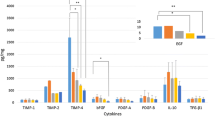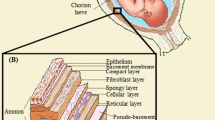Abstract
Amniotic membranes collected from the placentae of screened donors were processed, air dried and sterilized by gamma irradiation at 25 kGy. Effect of storage under different temperature and humidity conditions (10°C, RH 80–90%; 10°C, RH 40–50%; 40°C, RH 50–60% and 40°C, RH 10–20%) on the properties of the membrane were examined. Infrared (IR) spectral scanning was carried out to examine degradation or change if any in the tissue under different storage conditions. The degradation of amnion on irradiation with gamma rays or during storage after irradiation would tend to produce the relative variation in IR absorption troughs. This kind of addendum was absent in all the samples indicating no qualitative change in the material property of amnion. Water absorption and water vapour transmission rate (WVTR) of the membrane remained unchanged even after 6 months. No effect on the microbial permeability of membrane was observed during storage. The amniotic membranes were found to be impermeable to different strains of bacteria – Bacillus, Escherichia coli, Pseudomonas, Citrobacter, Flavimonas and Staphylococcus. The results indicate that amniotic membranes processed by air-drying are stable and can be stored under different environmental conditions without compromise to their clinical performance.
Similar content being viewed by others
References
Atanassov W, Mazgalova J, Todorov R, Stereva K and Trencheva W (1994) Use of amniotic membranes as biological dressings in contemporary treatment of burns. Ann Medit Burn Club 7(4): 202-205
Colocho G, Graham WP and Green AE (1974) Human amniotic membrane as a physiological wound dressing. Arch Surg 109: 370-373
Hadjiiski O and Atanassov N (1996) Amniotic membranes for temporary burn coverage. Ann Burns Fire Disasters 9(2): 88-92
Hilmy N, Darwis D and Hardiningsih L (1993) Poly(N-vinylpyrrolidone) hydrogels: 2. Hydrogel composites as wound dressing for tropical environment. Radiat Phys Chem 42(4-6): 911-914
Hilmy N, Siddik S, Gentur S and Gulardi W (1987) Physical and chemical properties of freeze dried amnio-chorion membranes sterilized by gamma irradiation. Atom Indonesia 13(2): 1-14
Lehninger AL (1982) Carbohydrates: Structure and biological function. In: Principles of Biochemistry, pp 277-301, World Publishers, New York
Lorusso R, Geraci V and MasellisM (1989) The treatment of super-ficial burns with biological and synthetic material: Frozen amnion and biobrane. Ann Medit Burn Club 2(2): 79-84
Robson MC, Krizek TI and Koss N (1973) Amniotic membranes as a temporary wound dressing. Surg Gynec Obst 136: 904-906
Sawney CP (1989) Amniotic membranes as a biological dressing in the management of burns. Burns 15: 339-342
Author information
Authors and Affiliations
Corresponding author
Rights and permissions
About this article
Cite this article
Singh, R., Gupta, P., Kumar, P. et al. Properties of Air Dried Radiation Processed Amniotic Membranes under Different Storage Conditions. Cell Tissue Banking 4, 95–100 (2003). https://doi.org/10.1023/B:CATB.0000007030.72031.12
Issue Date:
DOI: https://doi.org/10.1023/B:CATB.0000007030.72031.12




